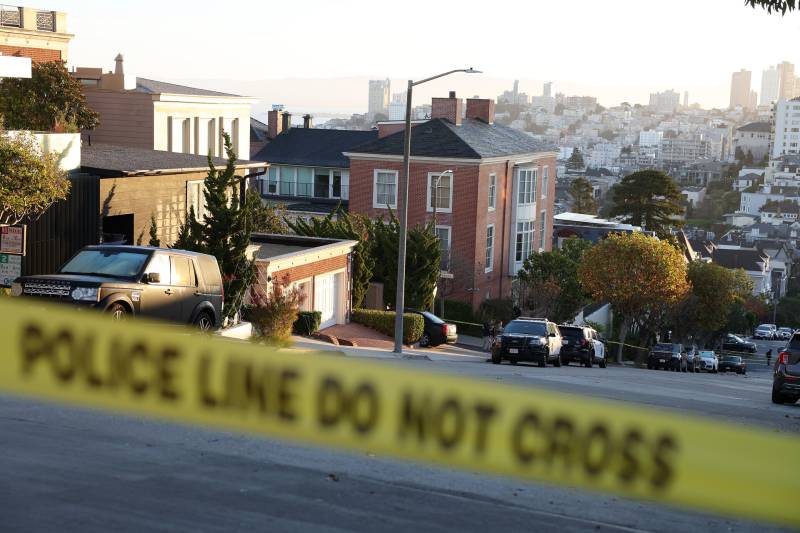A court on Friday released graphic video and audio recordings from the night Paul Pelosi, the husband of former House Speaker Nancy Pelosi, was attacked with a hammer in the family's San Francisco home last year.
The release, which includes police body camera video and a recording of Pelosi’s 911 call, was ordered earlier this week by a San Francisco Superior Court judge in response to a legal motion from a coalition of media organizations, including KQED.
David DePape, who is being charged with attempted murder in the attack, broke into Pelosi's home in Pacific Heights in the early morning of Oct. 28, and demanded to see Nancy Pelosi, who was not home at the time. DePape reportedly told Paul Pelosi he would wait for her.
The recording of Pelosi's call to 911, made just after 2:20 a.m., lasts less than three minutes. "There's a gentleman here waiting for my wife to come back, Nancy Pelosi," he calmly tells the dispatcher.
"Is the Capitol Police around? They're usually here protecting my wife," Pelosi asks, in an apparent effort to subtly hint at the urgency of the situation, without setting off DePape.
When the operator asks Pelosi if he needs the police or fire department to come, Pelosi directs the question to DePape, asking, "What do you think?"
Pelosi then tells the dispatcher, "He thinks everything's good. I've got a problem. ... He's telling me to put the phone down."
Within minutes, at least two San Francisco police officers knocked on Pelosi's door, which, in the video, either Pelosi or DePape slowly opens. The officers encounter the two men standing next to each other, each with a hand on a single hammer, police body camera footage shows. Pelosi appears to be in his boxer shorts.
Warning: This police bodycam video includes scenes of graphic violence.
When the police order DePape to "drop the hammer," he says, "No," yanks the hammer away from Pelosi and, after a brief scuffle, lunges at him, hitting Pelosi in the head with it.
One of the officers yells, "Oh, shit!," before at least two of them rush through the door and tackle DePape.
In the footage, Pelosi is seen lying facedown on the floor, with DePape's legs and feet on top of his back.
"Give me your fucking hand," an officer yells twice to DePape as he tries to handcuff him. The police then call for emergency medical assistance for Pelosi. The tape ends after less than two minutes.

